An Archive of One’s Own
A conversation with photographer Julie Rae Powers
By Mesha Maren
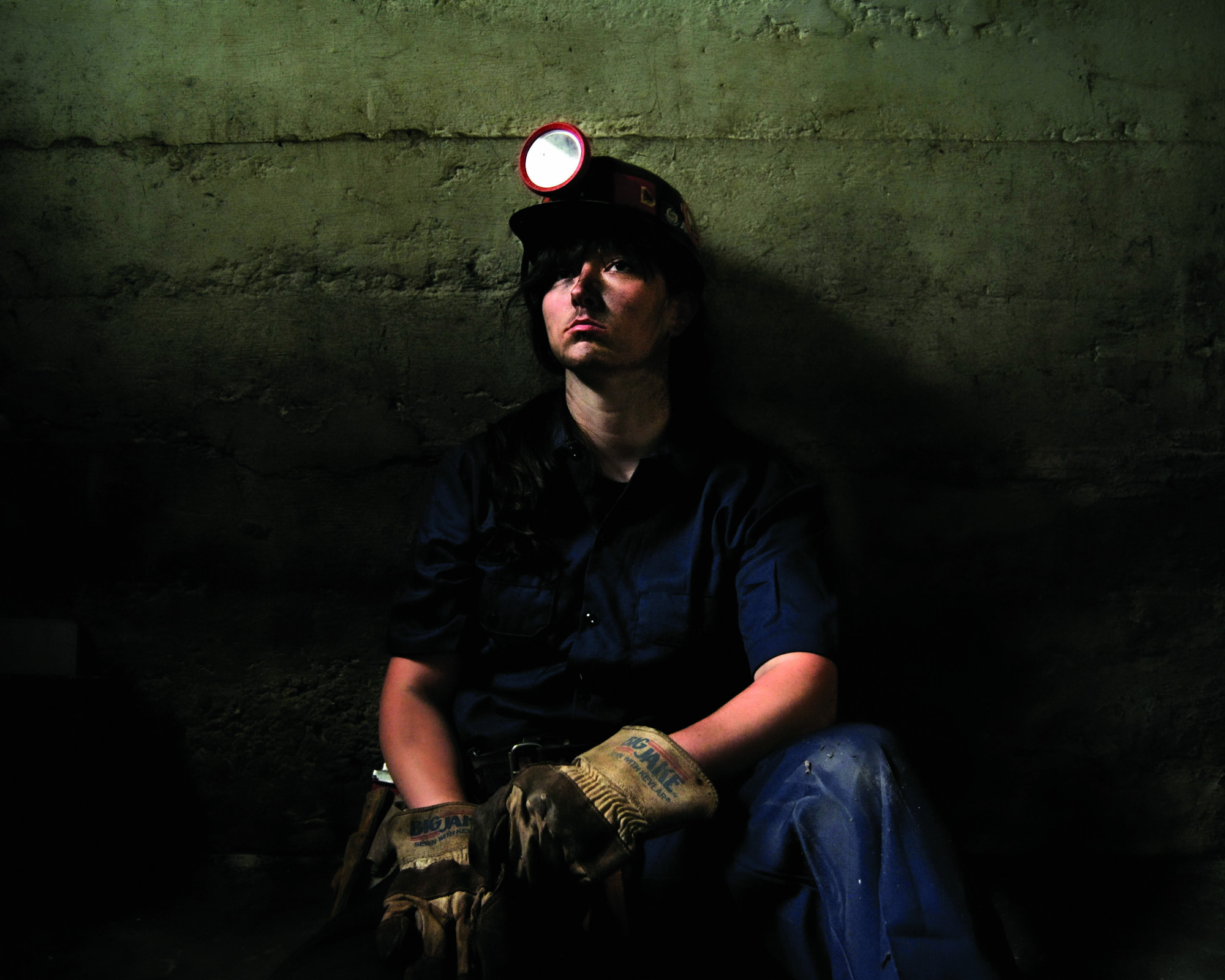
Homage: Another Day on the Job, 2014. All photographs by Julie Rae Powers © The artist. From their monograph Deep Ruts, published this year by Platanus Editions
When I first encountered Julie Rae Powers’s photographs through the Soft Lightning zine and Instagram account, I felt them deep in my guts. Home, they said to me, welcome home. The familiarity rang out from the trees and the hills in Powers’s images, through the electric viridescence of greenbrier vines and the Norfolk Southern train passing the Firestone plant. As a queer writer from southern West Virginia, I am motivated by questions of how the specific place where a person is born and raised impacts them: how the very shapes of the hills and trees anchor themselves inside us and form our first vocabulary; what it means to leave such a place; what it means to stay, and to return. I immediately felt a resonance between the echoes in my novels and the elemental truths that Powers explores through their camera lens.
The photographs in Deep Ruts, Powers’s photographic monograph (published by Platanus Editions in April 2024), are a gift both to those of us who see ourselves in them and to those who do not. They are a reckoning in the oldest sense of the word, meaning to recount, to relate, to vindicate. I was delighted to talk with Julie Rae about their image-making process, loneliness, inspiration, and the haunts and joys of being queer Appalachians. We spoke over Zoom across several days and collated our conversations.
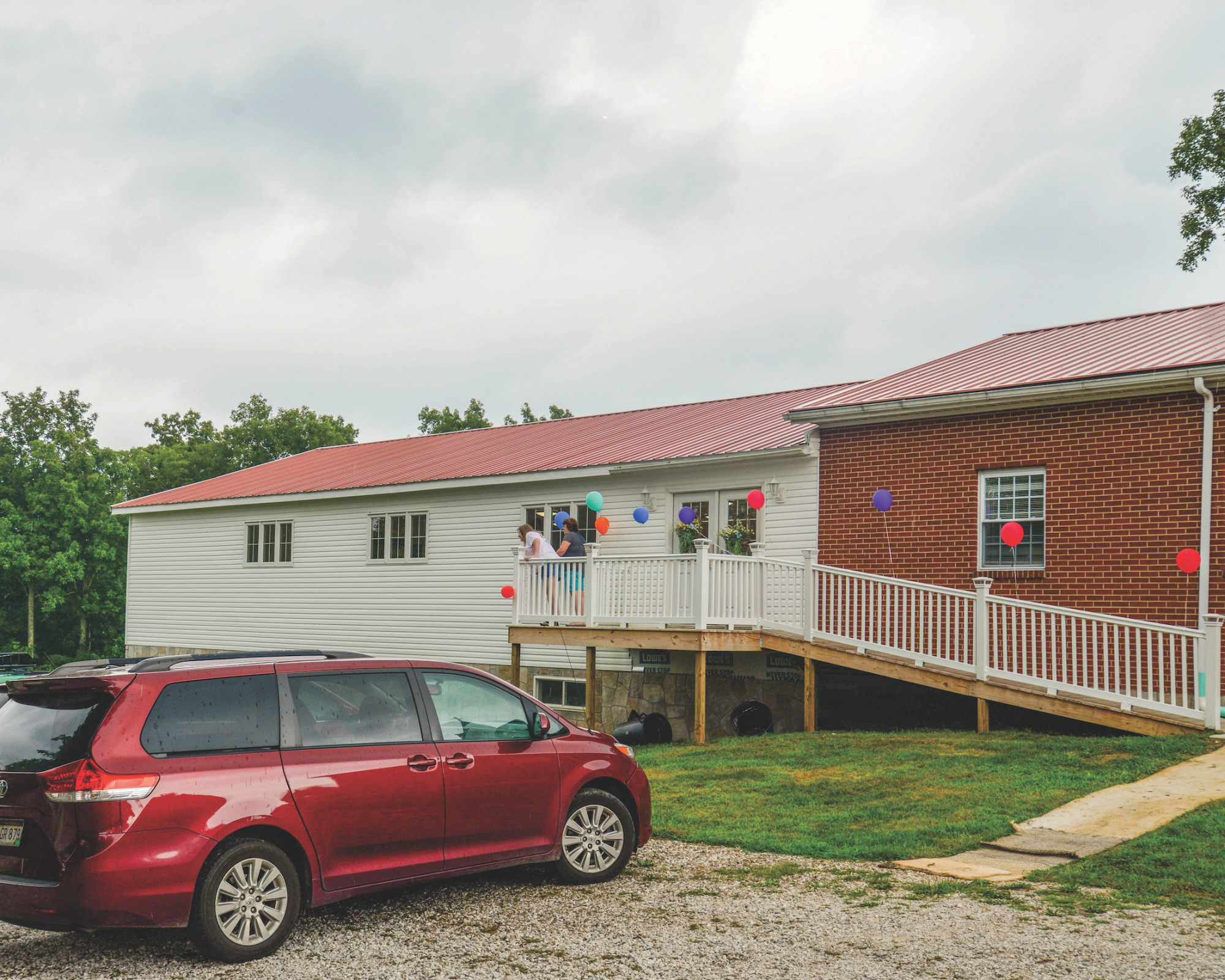
Hope for a Homecoming, 2014
Mesha Maren: Let’s talk about loneliness. In a statement about Deep Ruts, you said that the book was “started and created out of loneliness.” When I read those words, I felt such a kinship. Loneliness has always been an essential part of my art: the loneliness of rural childhood (although actually I felt less lonely when I was out in the woods by myself or with my brother and more lonely when I was in school trying badly to make friends with other girls); the loneliness of the closet; the loneliness of blundering around figuring out my sexuality without many role models; and the loneliness of missing West Virginia when I had moved away. I sometimes joke that people who didn’t experience acute loneliness and social isolation can’t make good art.
Julie Rae Powers: For me, that loneliness is very core to my experience as a queer person from Appalachia—not necessarily the entirety of my experience, but part of it. It’s the narratives we’re told about how queer people don’t exist, [or] if they do, they have hard lives. Turns out most of my peers growing up were queer and we just didn’t have the knowledge or freedom to acknowledge one another. Those lies, those stories told about queer people from the outside in and even from the inside in, are deeply isolating and isolate us from one another. That is the role of white supremacy, which is very abundant in Appalachian spaces. The camera was a way of coping and working through my experience. It’s a salve in a way, but [also] something much greater than that, because making this body of work has led to my healing, and the camera has been a conduit for connections that have helped me feel less lonely.
From what I understand, you began making the photographs that would become Deep Ruts after you had moved away from West Virginia. This was true for me too; I started writing my first novel Sugar Run, which is set in my hometown in southern West Virginia, after I had moved to Iowa City. During the long white-cold winters there I would squirrel away in a cubicle in the public library and write my way back into the lush green heat of West Virginia summers. Can you talk about what role distance plays in your practice and in the making of Deep Ruts?
Moving away really made me realize a lot about my own experience and made me miss it. My queerness made me feel like I wasn’t allowed to be connected to my history, my culture, my family. I think that distance very much makes the heart grow fonder. This thing that you feel like you’re being denied and can’t have, because of fundamentally who you are—I was reaching for it. Making these images was my way of reaching for it, wanting to connect to it and [to] feel like it belonged to me and I belonged to it. If I stayed in Appalachia at that time, I don’t know if this same type of work would have been made. I think leaving Appalachia was really important for me. I didn’t feel like I could stay. Maybe you felt that way too? I saw how hard it was to grow up in some of these spaces and the struggle. I knew I didn’t want to work in the window factory in town. I didn’t want to work in the coal mines. I think leaving, it breaks your heart in this way; you want to leave, you want these opportunities, you want this new imagined life. You want the promise of all the things that perhaps you couldn’t have back home. Then you realize it’s at the expense of so much, and that is a certain type of heartbreak.
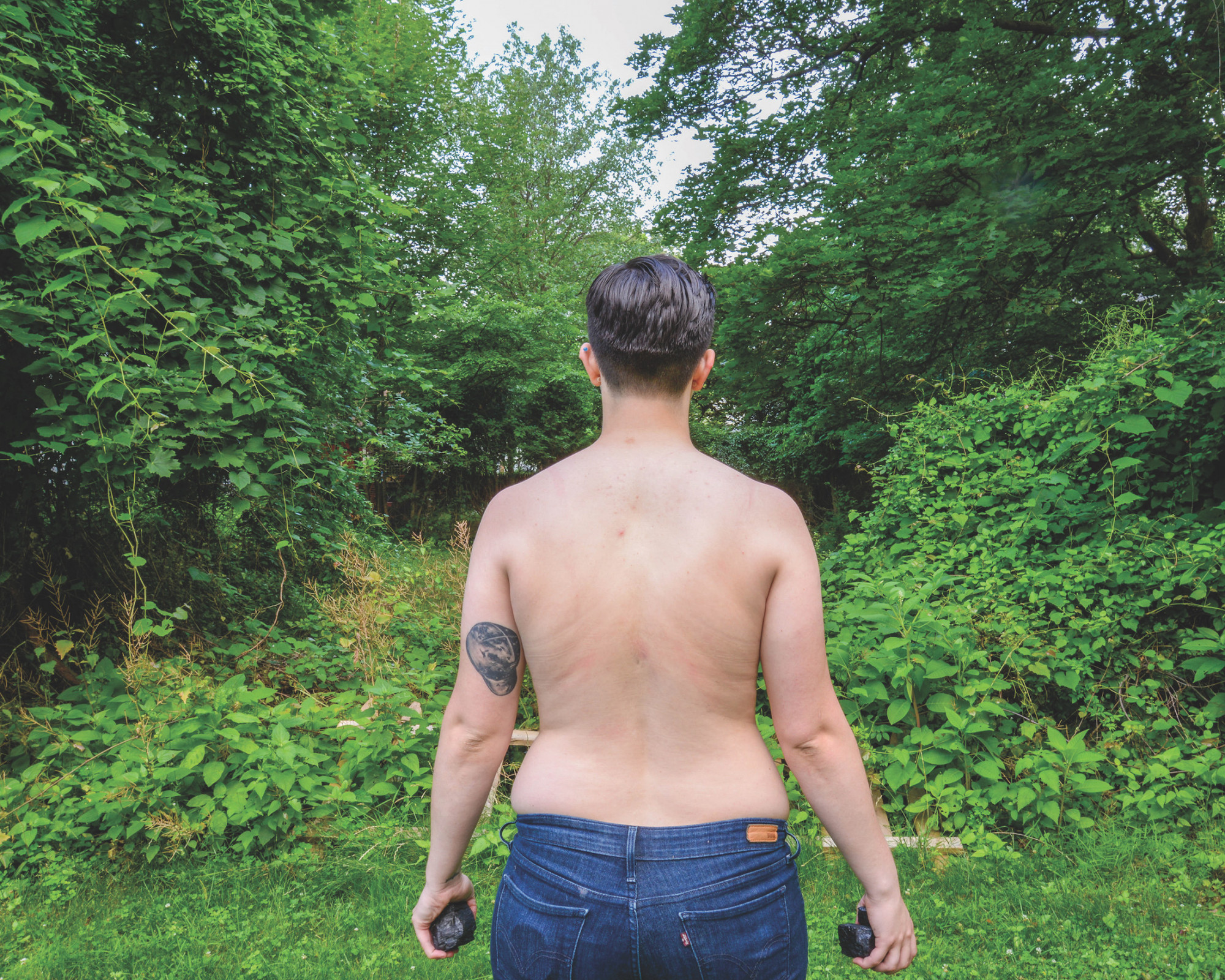
Towards the Past, 2015
The book is divided into three sections: The Father, The Son, and The Holy Ghost. Can you talk about this structure and the transition from black-and-white images (in the first section), to color images with some black and white interspersed (in the second), to all color (in the third)?
It was a tough process. I was like, Well, I can’t put ten plus years of images in a book. I struggled with that for a long time. This book has had many different iterations. Finally after eight or nine years of that struggle, I told myself I had to give it a structure. I started using the language of Christianity and biblical references from my childhood paired with my present queer experience. The Father, The Son, and The Holy Ghost felt like it was the perfect structure, because this book is about queerness and religion feeling as if [they’re] in opposition to one another.
I want to talk about repetition because you make great use of it throughout Deep Ruts. Some images are repeated (the buck as seen from down the road); and then there are “ghost images” like the self-portrait Butch Dyke as Ghost in Their Father’s House; and a different kind of “ghost” photo, where you place an image of your grandfather beside an image of yourself. Did you think a lot about echoes while working on this book?
That [buck] image, with the deer standing in a clearing at the end of a road, appears in black and white in The Father and then appears in color in The Holy Ghost. I put that repetition there because throughout the whole book, the deer ends up [being] a bit of a metaphor for myself. Am I being hunted? Will I survive? What sort of evolution am I having? It takes on a transformation or a change in circumstance; it is a bit of a note that there’s been growth or an evolution. The sort of ghost motif or repetition within The Son portfolio is talking about a different type of absence where you don’t feel fully seen by whoever’s in the room. Particularly, I think about Butch Dyke as Ghost in Their Father’s House. I’m in my father’s house, but I still feel like a ghost. Not feeling truly seen by him. But then, of course, when we’re talking about the Holy Ghost, that’s another type of ghost that is never seen but is felt.
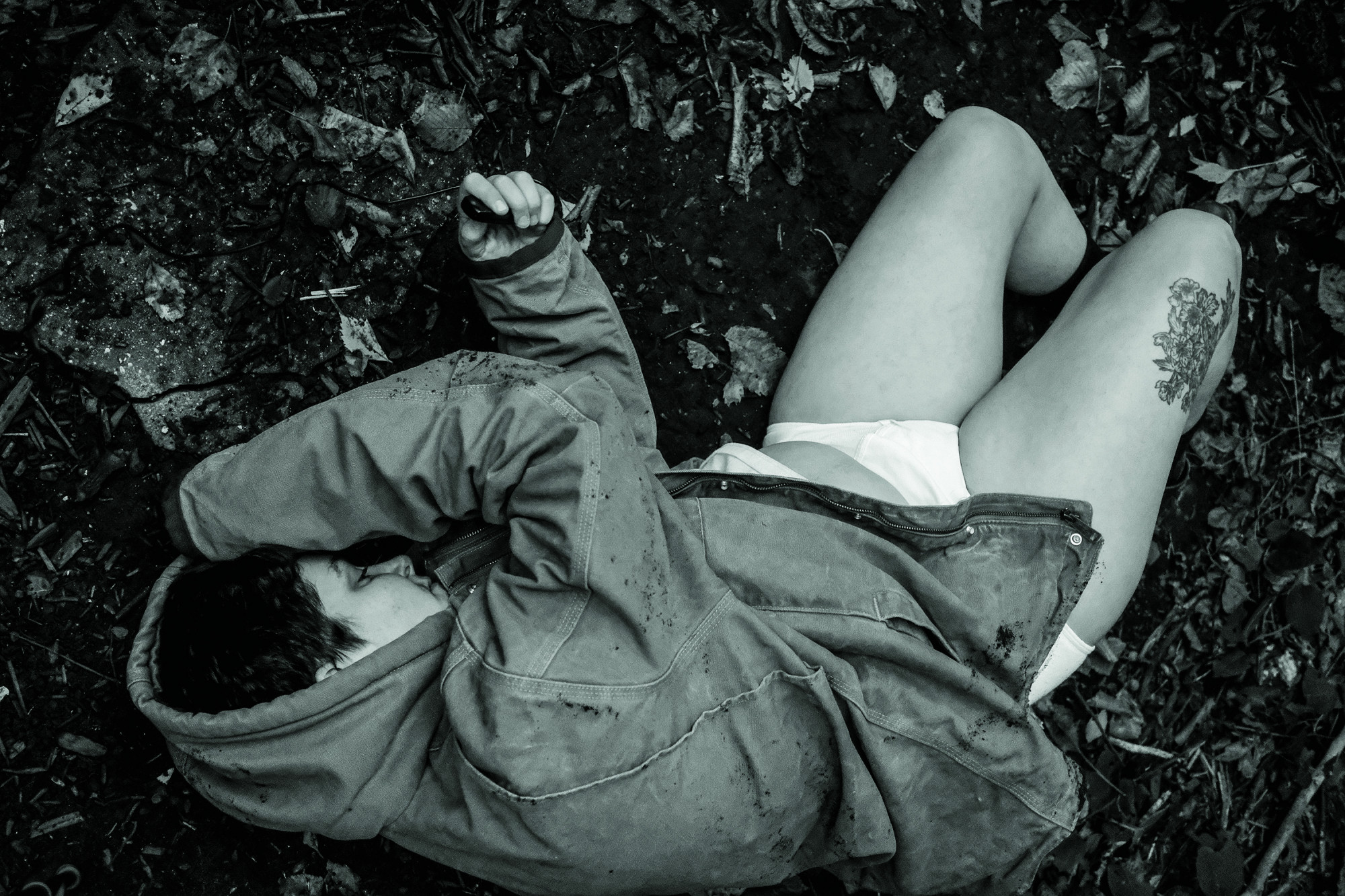
Self-portrait in Brooklyn Backyard Wearing Mom’s Carhartt, 2021
You also include historical images both from your family and from newspapers. I was particularly taken by the two images on the first page—newspaper clippings of the miners from the Consolidation Coal Company in 1939, as well as the image Mom & Dad, Coal Mine Tour, 1988-87, where your parents are both wearing mining helmets and smiling at the camera. Can you talk about your choice to include these materials?
Including those images is a way of wanting to connect to those feelings of closeness and a sense of belonging in my family. I’ve really been thinking about the archive and how certain types of marginalized or oppressed peoples don’t get to make their own archives, or if they do, they get destroyed, like queer archives. Certain political movements seek to raze them. West Virginians have been told stories about themselves their whole life. I want my own archive. I want to interact with my archive, which is what this book is. I firmly believe you can’t know where you’re going until you know where you’ve been. I think it’s important to be very intimate with that past. I couldn’t move forward without interacting with that history. Also, it’s an honoring, because I think there’s a sense of guilt that comes with leaving. It’s such a complicated feeling; you don’t want to leave, but you feel like you can’t stay. I needed a way to really connect with all these very intimate parts of myself from a distance. I think there were a lot of reasons why I needed to include non–fine art images. I’m not necessarily the most interested in a hierarchy of a fine art image versus a vernacular image. Some of the very best photos that have changed my life have been just snapshots from people’s family albums.
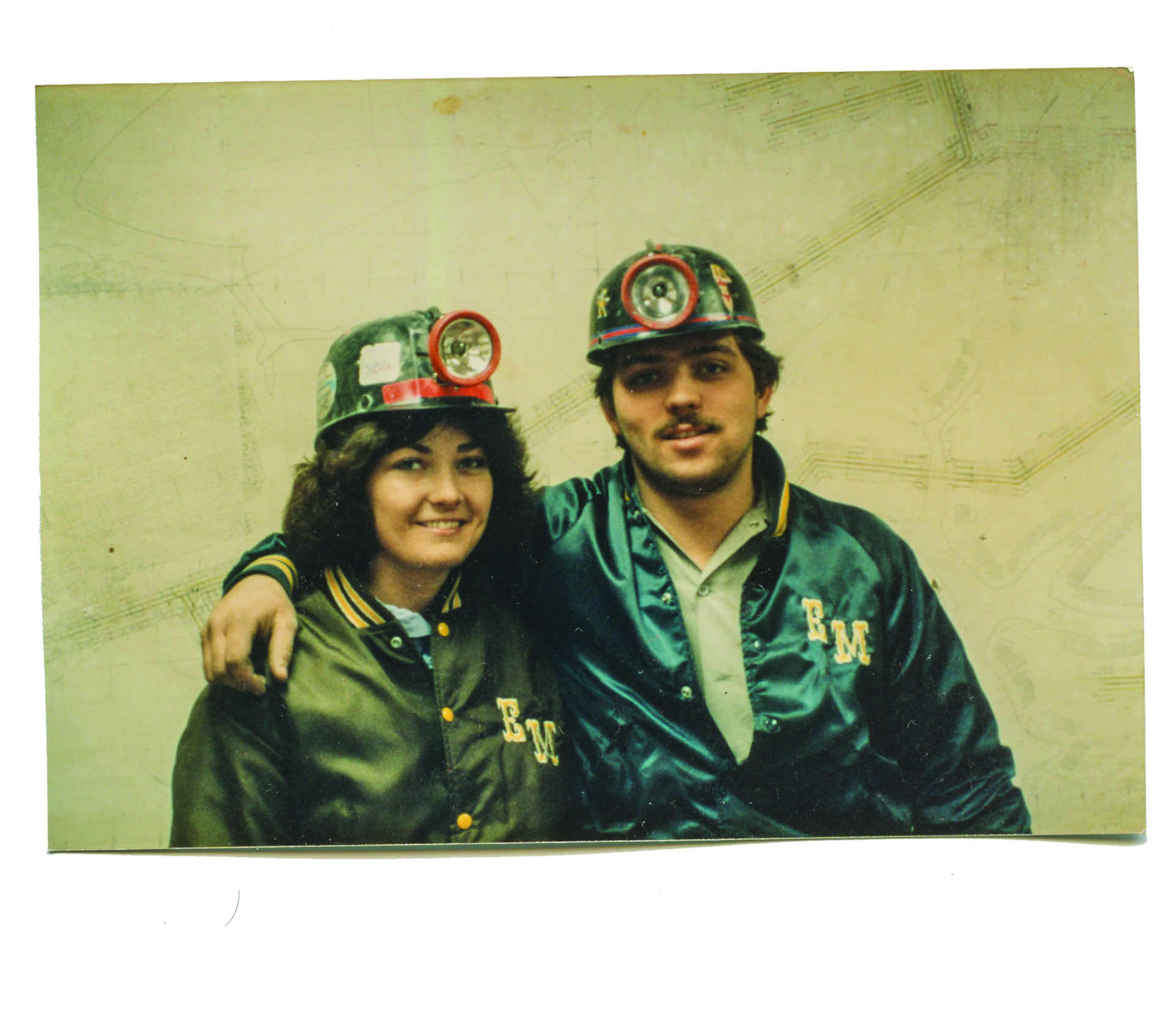
Mom & Dad, Coal Mine Tour, 1988-87, 2014
Let’s talk about representation and belonging. I’ve been thinking about how much the longing to belong has been a part of my own artistic process. As a queer person I sometimes feel like I don’t quite belong in Appalachia, and as an Appalachian I sometimes feel like I don’t quite belong in queer communities. Does the longing to belong make for good art?
It was very important for me to really start to be able to see myself in my own reality, my own lived experience, or create a space in Appalachia where all of my aspects could live together. Photography was a place I could do that. And so it was important to me to see myself in those photos, to feel like I was standing up for myself, even if I wasn’t actually standing up for myself. It was a part of the process. I felt so invisible, in certain ways, my whole life. Representation in a photograph was important for me because I could literally see myself: butch, standing firm, in the woods, present. I didn’t see a lot of imagery like that growing up. Since I started Deep Ruts there has been an expansion of Appalachian media made by marginalized folks. So many amazing things are happening in Appalachian art, photography, literature, and Appalachian studies. The two aspects of my identity, queer and Appalachian, feel as if they can live together now because of the work of my brilliant peers in their respective fields. Seeing yourself somewhere really can change your whole world.
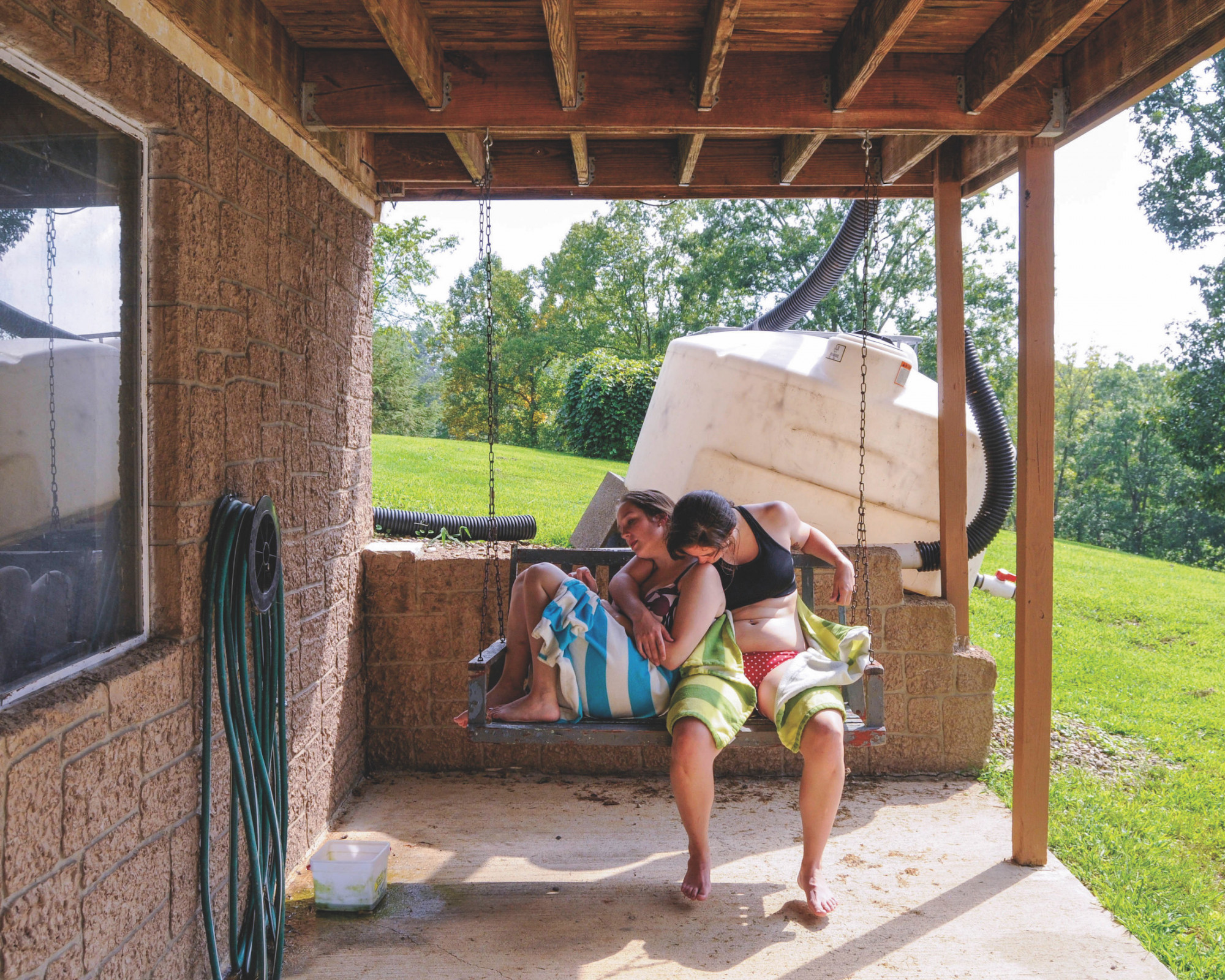
When Fantasy Becomes Reality #2, 2014
Julie Rae Powers is from West Virginia and Virginia. They come from a working-class family of homemakers, teachers, coal miners, and railroad laborers. Their photographic and written work has focused on family history, coal, Appalachia, and queerness.



